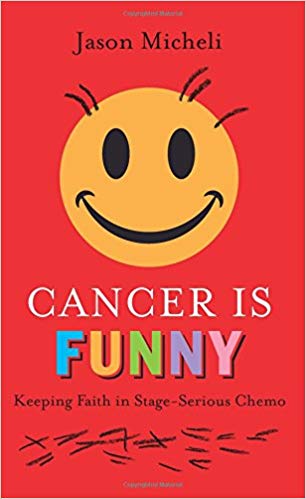Last month, the writer Julius Sharpe posted the following exquisitely relatable sentiment: “Whenever someone stops tweeting, I feel like Ben Affleck going to Matt Damon’s house at the end of ‘Good Will Hunting.’ So happy for them.”
So why hasn’t Sharpe done a runner, like Matt Damon lighting out for the territory? And why, more to the point, haven’t I?…
The problem, for Lanier, is not technology, per se. The problem is the business model based on the manipulation of individual behavior. Social-media platforms know what you’re seeing, and they know how you acted in the immediate aftermath of seeing it, and they can decide what you will see next in order to further determine how you act—a feedback loop that gets progressively tighter until it becomes a binding force on an individual’s free will…
A bound will reference is certainly worth the mention, but the article’s real contribution is its deep dive into the failure of big data to shift into a predicting or controlling function. Here’s a quote from Brindle’s book:
To be alive and online in our time is to feel at once incensed and stultified by the onrush of information, helpless against the rising tide of bad news and worse opinions. Nobody understands anything: not the global economy governed by the unknowable whims of algorithms, not our increasingly volatile and fragile political systems, not the implications of the impending climate catastrophe that forms the backdrop of it all. We have created a world that defies our capacity to understand it—though not, of course, the capacity of a small number of people to profit from it. Deleting your social-media accounts might be a means of making it more bearable, and even of maintaining your sanity. But one way or another, the world being what it is, we are going to have to learn to live in it.
Class is also an important piece of the conversation, as both authors agree with the old addendum, “if you’re not paying for it, you’re not the customer, you’re the product.” Which is to say that the attraction of control, whether that’s through a carefully manicured social media profile or a helpful list of curated streams, is something that a handful of people are making big money exploiting. A beautiful mind indeed.
Do not refer to debilitating illness as a “journey.” Life is a journey. A trip to Italy is a journey. Major illness is a road washout at 55 MPH in the dark with no warning signs.
Do not, puh-leeze, especially in the person’s obituary, cite his/her “courageous battle with cancer.” A person doesn’t endure the debilitating indignities of chemo/radiation/surgery because he/she is brave. A person endures these things because the only alternative is daisy-pushing—it is actually the path of least resistance. Doctors might be doing battle with cancer, but the poor patient is simply the battlefield.
The list includes an admonition to leave religion out of it, which is half helpful, but a thoughtful Christian faith with the requisite self-emptying attached will hit most of these ticks along the way.
4. Much has been made this week on Millennial marriages and dropping divorce rates, though perhaps that’s a bit of a misnomer once all the numbers are examined. It might be more of a mixed bag. Here’s some context from The Atlantic:
Chen connects this trend to the decline of well-paying jobs for those without college degrees, which, he argues, makes it harder to form more stable relationships. Indeed, Cohen writes in his paper that marriage is “an increasingly central component of the structure of social inequality.” The state of it today is both a reflection of the opportunities unlocked by a college degree and a force that, by allowing couples to pool their incomes, itself widens economic gaps.
So, looking at married couples alone doesn’t capture the true nature of American partnerships today. “If you were to include cohabiting relationships [in addition to marriages], the breakup rates for young adults have probably not been going down,” Cherlin says. In other words: Yes, divorce rates are declining. But that’s more a reflection of who’s getting married than of the stability of any given American couple.
5. This week in humor, The New Yorker cleans up with Ayn Rand’s Fall Fashion Advice (above) and also Thoughts on My Way to Work. The latter includes gems like “If I sit all day and keep to myself, I wonder if anybody will notice that I haven’t ironed this shirt in four years.” The real winner of the week, however, is The Atlantic’s Deconstruction of the Dad Joke:
In the following century, many fathers stuck with the “emotionally distant, usually at work” fatherhood archetype, but others, especially in the years after World War II, “tried to befriend their children and take a place in the main currents of home life.” In the latter half of the century, Rotundo writes, men began spending more time alongside their children, teaching them home and yard maintenance, coaching their youth sports, and eventually taking on more feeding and care duties as more mothers joined the workforce. And it’s this more modern ideal of fatherhood, in which fathers are expected to play with their kids, keep them entertained, and bond with them emotionally, that arguably facilitates the playful, joking relationship between father and children often observed today—and, in turn, the dad joke.
Could it be that a harmless pun or a groan inducing punchline are cultural artifacts of loving fathers, signifiers of the Heavenly Father who also loves his children to death? To think that God takes pleasure in the discovery that the skeleton couldn’t cross the road because “he didn’t have the guts!” That’s a world I want to live in.
6. If you haven’t yet succumbed to the collective peer pressure of the Mockingbird staff to go watch The Good Place (at least the first season!), here’s a few lines from The AV Club‘s introduction to season three to help make the case:
The thing is, if the Good Place of The Good Place is as all-knowing and perfect as Michael and every other functionary in the universal machinery would have it be, there’s precious little room for human weakness of any kind. (Tellingly, we’ve never been told of a single person, historical or otherwise, who definitively resides in the Good Place. We know Florence Nightingale just missed the cut.) Especially since, as Michael successfully made his case to Gen, his disastrous fake Good Place experiment showed that these four people—at least when they have each other—can be better. The Good Place set itself up originally as a clever, very funny lark, with unrepentant jerk Eleanor Shellstrop destined to outsmart the goody-two-shoes and beat the system. But the show quickly spun its premise out to comedic and philosophical reaches both unexpected and unprecedented in your average network sitcom.
Strays:
• Cher covers ABBA (see above)- we eagerly await DZ’s thoughts…
• Also, new unreleased Beatles material on the way from The White Album recording sessions. “It’s double or triple Sgt. Pepper—the four walls of this studio couldn’t hold them anymore.”
• A scatological scandal: here’s the one word you can use online to prove you’re a human and not an algorithm.
• I don’t know that we need another figure of speech like Tiger Mom or Helicopter Parenting to bemoan the state of child rearing in America, but one could make the case for Lawnmower Parenting.




















just in case, want to add the news that Facebook got hacked and 50 million accounts were reported effected. It won’t be hard to find coverage of it, though, so I figure there’s little need to link to specific stories since the news has already gone worldwide.
That’s probably the biggest could-effect-you-right now bit of online news for the end of the week at the moment
Thank you Bryan! Totally with you on #1. It reminds me of the Patch Adams scene where a lady’s dying wish is to swim in a pool of noodles. Maybe inside we’re a lot like her 🙂